Do you sweep and scrub your fireplace every summer? Do you clean the gutters every winter? Do you rake the lawn early during every springtime and plant new grass seed at the autumn’s end?
Caring for a home can be a great joy, but it also comes with an armload of responsibility and requires a decent serving of know-how. The magnitude of the responsibility and volume of needed knowledge is magnified tenfold if your residence is a standalone property with a yard, patio, deck, and/or other exterior features for which you have to care. The easiest way to go about home maintenance is to throw money at the house, but that will likely be ineffective, and the money will look kind of silly lying there among the hedges, mulch, and petunias. Hiring people to care for your house and grounds is always an option if you didn’t waste all your money in that throwing incident, but home maintenance is too expensive for some households and is at odds with the self-reliant spirit of other homes.
If you want to take care of annual home maintenance yourself, I say good for you, sir; the more time and sweat you invest into your home, the more pride you will take in the place, and the more cash you’ll save. And if you break all the chores, tasks, duties, and other synonyms down into a logical, structured order, you can spread the work out over the course of an entire year, so you’ll never feel overwhelmed (at least not by home maintenance; this is no time to tackle your existential dread) and you can keep the home clean, safe, efficient, and looking lovely in every season.
The best way to approach annual home care and repairs is to plan out a seasonal home maintenance checklist. When you break down residential upkeep according to the season, not only will you be assigning yourself a manageable amount of work, but you’ll take the best care of your property by working with the natural flow of the year.
Winter Home Maintenance Checklist
Winter
- Protect the pipes
- Prepare for snow and ice
- Monitor interior air quality
- Check on the fireplace (again)
Assuming you live in a place that sees freezing temperatures, snowfall, yetis, and icy streets and sidewalks during the winter, read on. If you live in Florida, Puerto Rico, or in much of the Southwest, you can probably skip ahead to the spring section.
Protect the Pipes
Before the first freeze, make sure to clear and then shut off any water pipes that are exposed to the outside of your home, such as the spigots that feed garden hoses. Woe to you who forgets this step; exploded water pipes really, really suck, to use the professional lexicon.
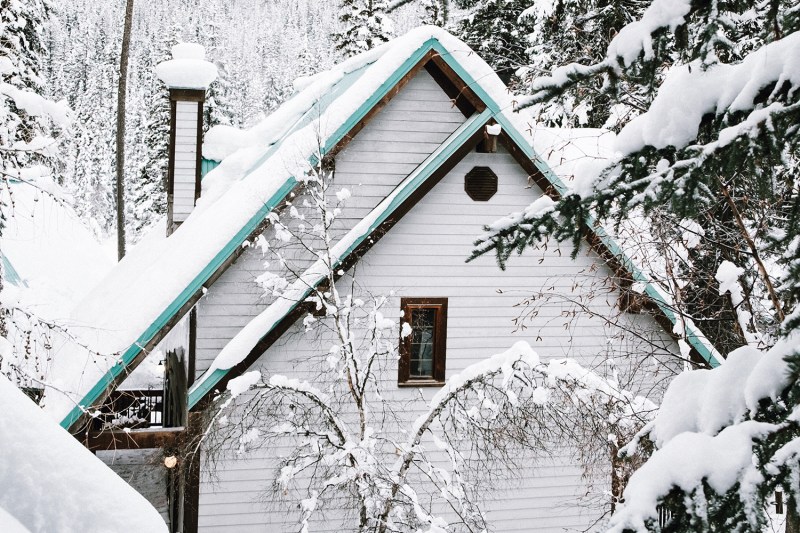
Prepare for Snow and Ice
Caring for a home in the wintertime mainly involves preparation rather than preemptive action. Make sure you have a snowmelt product (rock salt, e.g.), shovels, and perhaps even a snowblower on hand and easy to access. Before a predicted snowfall, put down a light layer of snowmelt product, cover the windshield of your car, and gather a scarf, pipe, and appendage-like twigs to make snowman deserving of coverage in the local paper.
When you remove snow, work slowly and steadily. Every year, many back and shoulder injuries and even heart attacks are caused by snow clearing. And watch out for a slippery layer of ice underneath the snow.
Be sure to watch out for and clear any ice dams that form in the gutters or at the edge of the home’s roof line. Your roof is often warmer than the ambient freezing air due to its dark color. Because warm air rises from the house below, but the edge of the roof and the gutters are often freezing, ice forms there. Ice dams are created as this frozen water accumulates, and these damn things block snowmelt and rain water from getting down into the gutters. As ice dams grow, they can put so much weight on gutters that they cause damage; they also concentrate water over the side of the home that leads to potentially serious interior damage as well. Weeks or months of drips from an ice dam can see water running down behind the exterior siding, rotting support beams, drywall, ceilings, wood floors, and ruining carpets, too. Ice damn can also cause mold along with the rot
To avoid ice dam, seal your attic so the temperature under the roof stays at a constant similar to the outside air and clear snow off the roof.
Monitor Interior Air Quality
Interior air quality is such important stuff that experts even came up with an acronym: IAQ. Clever, right? During the winter, all the windows tend to stay closed up tight, so the air inside the home tends to grow stale and unclean. Did you know that we get sick more during the winter not because of the cold temperatures outdoors, but because of the poor air quality and close exposure to germs indoors? It’s true. So again, clean or replace those air filters and consider using an air purifier in the home.
Check on the Fireplace (Again)
Wintertime fires are great, but they can cause serious indoor air quality issues. Again, make sure your fireplace is in good working order every year and build a good fire using dry wood and getting the updraft going strong. Note that in newer homes or homes of any age that are very well insulated, you might have to crack a window for a while to get an updraft moving.
Spring Home Maintenance Checklist
Spring
- Seed and sod the lawn
- Plant the flowers
- Inspect the house’s exterior
- Clean the deck and patio
- Protect the HVAC
- Test the smoke alarms
Ah, springtime! That season when the land awakes from the slumber of winter and life returns anew! The season of morning dew, flower buds, pollen, and Major League Baseball! And, of course, of spring cleaning. We tend to spend most of the wintertime indoors, so when we finally emerge from our holes — er — homes near the end of March, we often have our work cut out for us in restoring our properties and refreshing the inside of the residence. Here are the major home maintenance tasks you have to take care of each and every spring.
Seed and Sod the Lawn
Now is the time for seeding and/or sod. Follow the instructions that come with the type of grass seed you choose and know that sod requires more frequency and volume of watering than you’ll probably expect. Also spend the time to prep the yard, which can mean raking up the thatch and spreading light peat moss for over-seeding, or renting a rototiller and ripping up the whole goddamn property for sod. Or something in between. Grass takes a lot of work at the start, but then it pretty much grows itself.
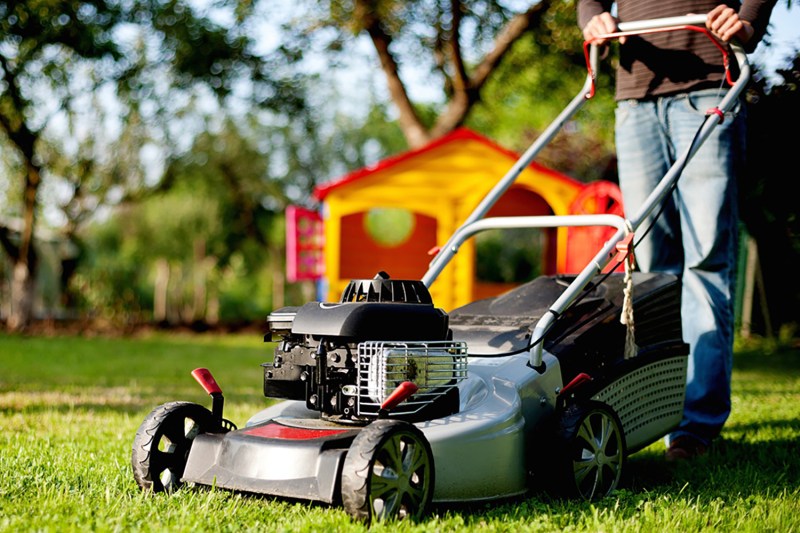
Plant the Flowers
Plant the annual flowers of your choosing in the early spring and don’t forget to mulch the beds. Mulch helps the ground hold in moisture and prevents the mean old sun from scorching your plants. As for food plants like tomatoes, cucumbers, or habanero peppers, read up on the duration from planting to harvest and plan accordingly. For the record, 80 days is a common span from planting to reaping (so to speak) for such plants. Don’t plant edibles too early and don’t wait too long. So be perfect, in other words.
Inspect the House’s Exterior
Cracked and flaking paint can not only make your house the laughing stock of the neighborhood (assuming you are surrounded by houseproud jerks), but can also allow moisture and mold to penetrate into the residence. Fresh paint can help protect the home, just make sure you also fill in holes or cracks and strip away old paint as needed. Look for loose or missing roof shingles, damaged or clogged gutters, and so forth.
Clean the Deck and Patio
Take the time to power wash or scrub your hardscape areas and decks at least once every spring. Removing the grit and grime that built up over the winter will not only help these surfaces look better, but will help them last longer too. Wooden decks and porches will require re-staining (or painting) and sealing every few years. It’s a labor-intensive task, but just do it — it’s less work and money than building an entirely new deck. As for patios, walkways, and driveways made with pavers, scrub ’em down and then make sure the gaps between the flagstones are adequately filled with locking sand or with cement. This prevents weeds and keeps the pavers securely in place.
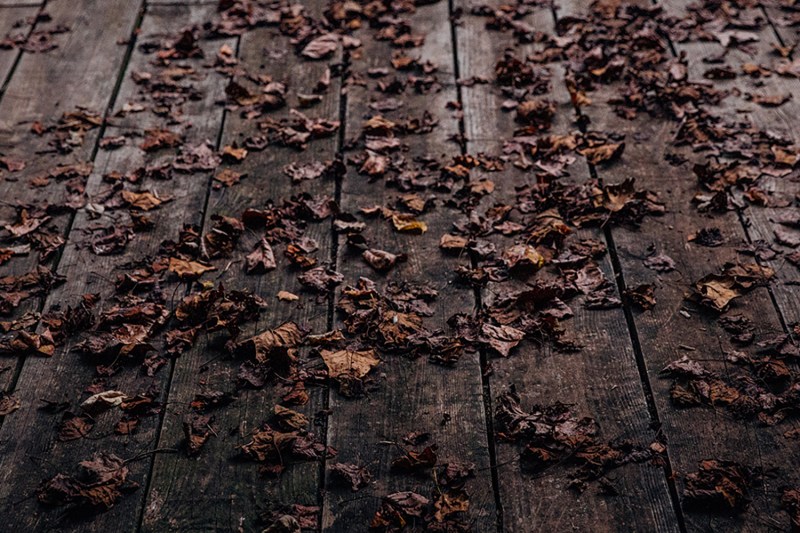
Protect the HVAC
Yep, it’s time to once again clean or replace those air filters and of course to remove any exterior covers you placed over your condensers and wall or window units. If you didn’t get the ducts inspected last fall, maybe do it this spring? Or if not this year, next. But remember that you can only procrastinate like that every other year.
Test the Smoke Alarms
You should actually test out your home’s smoke and carbon monoxide alarms during every season, but if you haven’t done so in a while, go ahead and make this test process part of your spring cleaning routine. Swap out all those 9-volt batteries for good measure. You and your family are worth the minor expense.
Summer Home Maintenance Checklist
Summer
- Mow the lawn
- Water the plants
- Check the insulation
Sometimes home care really is more about maintenance than repairs or new projects, so if you set yourself up a regular schedule for the few imperative tasks, you can devote most of your time during the summer to barbecues, hiking, playing with your kids, and kicking back with a good book. Just kidding! You’ll be at work most of the time. Oh well.
Mow the Lawn
If you get your lawn on a proper watering schedule (which I can’t create for you, as the amount of frequency of water your grass needs is impacted by region, temperature, grass type, and fate), then all you should need to do to keep the grass healthy is mow it, do some light weeding, and maybe fertilize once per season. Grass should be mowed before it’s long enough to curl over, and when you cut it, you should remove about 30 percent of the length of the blade. Make sure you inspect your in-ground sprinklers if applicable: a broken sprinkler head can waste water and money and can kill grass by flooding an area.
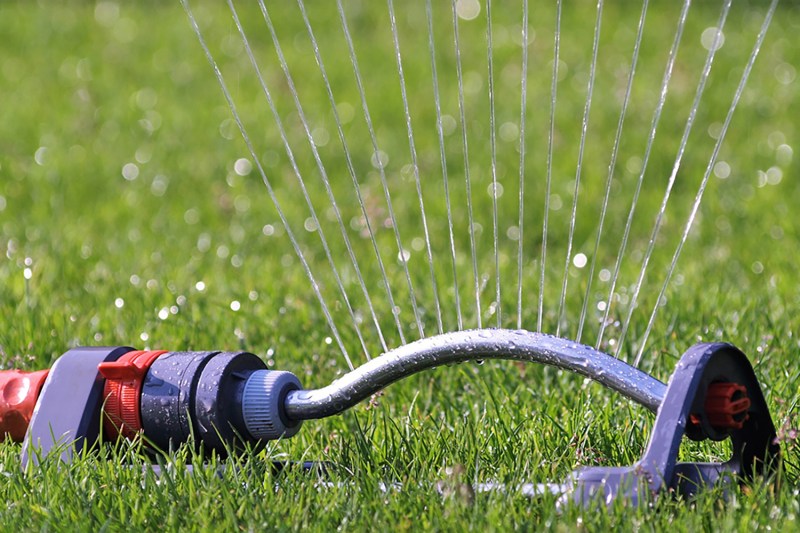
Water the Plants
Most plants make it pretty clear when they need water in the summer by looking droopy and sad. If you pay attention to your flowers and garden for a few days, you can probably start to anticipate when they need watering. Most plants also benefit from long, deep watering sessions every other day or even every few days rather than lighter daily watering. Once a plant is done flowering or as certain buds wilt, trim them back, which is ironically known as deadheading, as the process actually helps keep the plants alive and thriving.
Check the Insulation
Just like you checked for cold drafts coming into your house in the winter, check for hot air sneaking in and cool air leaking out during the summer. Repairing or replacing the seals around windows and doors helps keep the home cooler and more energy efficient, and again consider adding window tint (lots of window tinting is in fact optically invisible and won’t change the appearance or transparency of windows) to reduce interior heat caused by sunshine.
Autumn Home Maintenance Checklist
Autumn
- Mow the lawn
- Clear the leaves
- Plant and prune
- Clean the gutters
- Protect the HVAC
- Check the window insulation
- Clean the fireplace
As the summertime heat slowly recedes and the crisp breath of autumn blows across the land, there are a few important steps you have to take to prepare your yard and your house for the fall and for the hoary, frigid winter that lies beyond. (I’ve resisted a “winter is coming” reference here … actually, I’ve done no such thing.) Fall home maintenance involves:
Mow the Lawn
You need to keep on mowing the grass as long as it keeps on growing, but this will slack off as the temperature drops. You can also use your lawnmower to clear fallen leaves; it works as something of a combined power death rake/mulching machine, sucking up lots of fallen leaves and pulverizing those it misses into a mulch that will actually benefit the lawn.
Clear the Leaves
For the most reliable leaf clearing, though, grab a trusty rake or a leaf blower and get to work. It’s OK to leave leaves (heh) around trees, bushes, shrubs, or flowers that are planted in dirt or mulch beds; the leaves will break down into natural mulch over the course of the fall and winter. Leaves left on the grass will smother and murder the yard over time, though.
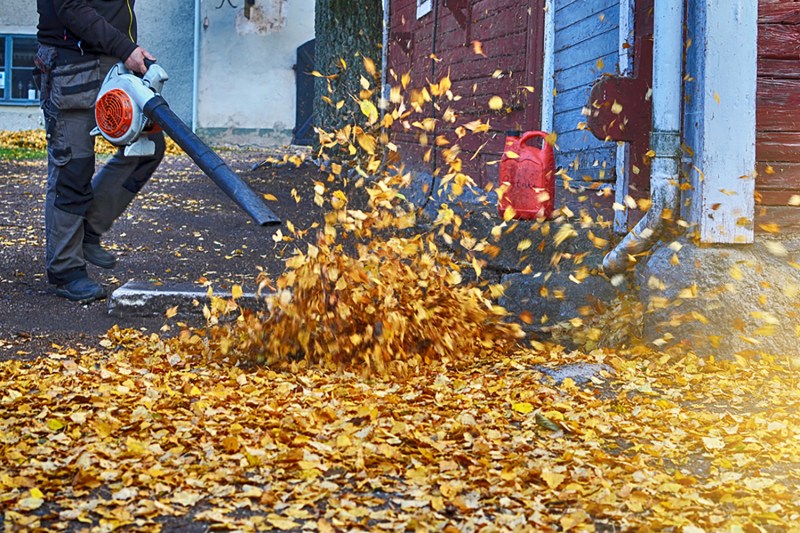
Also be sure to reduce your watering as the weather cools, and as the watering season ends, blow the water out of the lines of any in-ground sprinklers if your region experiences freezing weather. (Or hire a company to do that for you.)
Plant and Prune
Many flowers that will look lovely in the springtime must be planted in the fall. Certain bulbs benefit from a winter freeze, so get things like tulips and daffodils in the ground before it’s frozen solid and then look forward to spring color.
Most shrubs, bushes, grasses, and trees that live for many years benefit from yearly care, and the fall is a good time to offer it. Trim overgrown plants back, remove dead branches and limbs, and keep offering plenty of water until the ambient temperature is nearing a freeze.
Clean the Gutters
Once most of the leaves are down, it’s time for you to go up. Up on a ladder and/or onto the roof, that is. You need to clear out your gutters during the fall because if you don’t you’re going to be dealing with serious issues as ice builds up in and around them come winter. (Ice dams, which we’ll cover anon, can lead to everything from damaged exterior siding to rotted interior flooring.) Getting the gutters that run along the edges of the roof clear is step one and is best accomplished with a pair of gloves, a trash bag, and patience. Next, you need to clear the downspouts. You can clean your downspouts by first pouring a bucket of water into them. If there seems to be an obstruction, you need to clear it using any methods necessary, from a broom handle to a plumbers snake to pressurized water jets to dis-assembling sections of the piping; if the downspouts clog, the gutters are useless, after all.
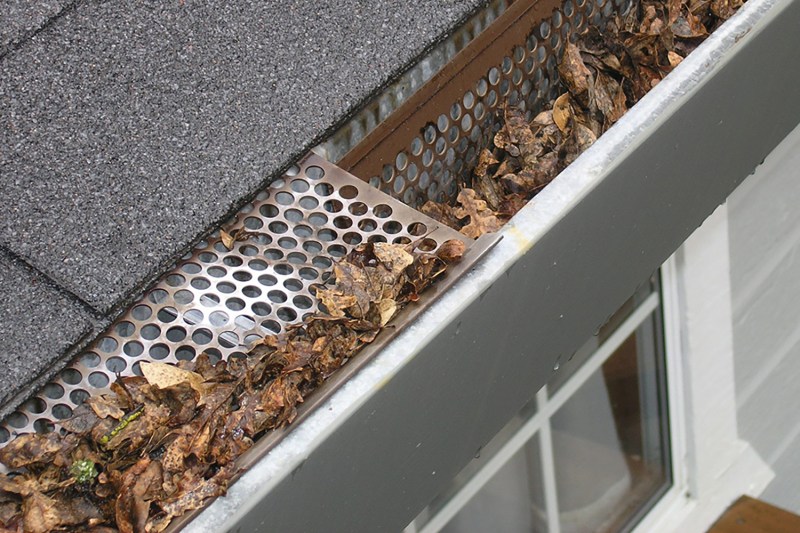
Protect the HVAC
If you have window- or wall-mounted AC units in your home, once you shut them off for the season, you should place a purpose-built cover over the exterior of each unit or remove them entirely and store for next year. Clean the filters now while you’re thinking of it. Actually, clean or replace any air filters used by a central heating and cooling system.
For homes with central HVAC systems, you should have the ducts, furnace (boiler or burner), and air handlers professionally inspected every couple of years. There are some jobs that require a professional’s eye.
Check the Window Insulation
Pick a cooler day early on in the fall, before you’re running the heat and after you’re finished with the A/C and fans, and walk all around your home checking for drafts. These should only be found near windows or doors, of course. If you find air sneaking in past a window frame or door frame, try to identify the exact problem area and then seal it off with caulk or silicone.
For single pane windows that allow for too much heat loss to the outside or transfer cold temperatures inside, you can install window film (a great DIY project) that will greatly enhance the insulation properties of the glass. On top of that, window film can reduce solar energy gain in the summer by backing infrared heat. In other words, it keeps the house cooler in the summer and warmer in the winter. Score.
Clean the Fireplace
A thorough sweeping and scrubbing and the use of a creosote log (available at any big hardware store and at many grocery stores) should be enough to prepare a chimney for use most years, provided you have a professional chimney inspection and cleaning service coming at least every three years — better yet, every other autumn.



